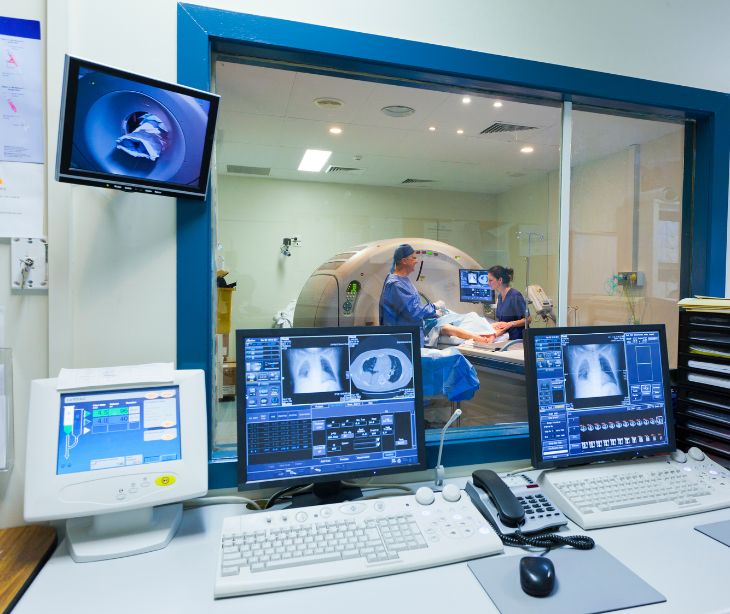
Cancer screening programs facilitate early detection and intervention. Personalized email reminders can improve patient adherence, leading to better treatment outcomes and reducing mortality rates associated with various types of cancer.
The CDC states that “rates of cancer diagnoses and cancer deaths are impacted by changes in exposure to risk factors, screening test use, and improvements in treatments. ”
So, proactive measures are often the key to early detection and prevention of serious illnesses such as cancer. Cancer screening programs help patients stay on track with their appointments. The efficacy of these programs can be enhanced by sending patients email reminders.
This is an effective tool to keep patients informed and involved in their healthcare journey. Emails can promptly contact patients and encourage them to schedule their screening.
A cross-sectional study showed that “Adults who used email to communicate with their health care providers had 1.55 times greater odds of receiving… cancer screening than those who did not...”
This demonstrates that emails can facilitate patient-provider communication and promote preventive healthcare practices.
Components of successful cancer screening reminders
Identify patients due for screening tests: Healthcare providers can collaborate to understand the demographic makeup and potential barriers to cancer screening. They can then use their patient record systems to identify which patients are due for screening.
Develop and send email reminders: When developing email reminders, providers must include the screening eligibility date. These reminders must align with the patient's age or their last test date. Additionally, confirming up-to-date contact information and using appropriate language are essential to maximize the effectiveness of the reminders.
Personalization: Healthcare providers can urge individuals to schedule their cancer screening by creating personalized emails.
Personalization involves addressing recipients by name and acknowledging their specific screening needs based on demographic information and medical history. Providers should also consider adapting the language to suit the patient’s cultural background and communication style.
Other factors may include: “differences by age, sex, insurance status, financial status, and health beliefs [which drive] the participants’ preferences.”
The previous study also elaborated that: “most participants preferred personalized reminders, and many favored receiving reminders less than 3 months before the recommended procedure date.”
Ultimately, sending personalized emails that resonate with their concerns could lead to better patient engagement.
Follow-up reminders can be sent to reinforce the initial message. Furthermore, providers should also include options for additional assistance with appointment scheduling.
Schedule appointments: Providers can use the patient records to streamline the process of recording patient responses. Implementing an appointment scheduling system could provide a convenient way to schedule screenings.
Track outcomes: Providers should implement systems to track patient progress. They can also select appropriate performance measures to evaluate the outcomes of the screening program. These measures provide valuable insights into the effectiveness of the intervention and help inform future improvements.
How to implement these components
Hypothetically, a family medicine practice aims to remind women aged 21-65 about the importance of regular Pap smears for cervical cancer screening.
They then collaborate with their healthcare team to understand potential barriers, such as fear of discomfort or lack of knowledge about screening guidelines. Using their electronic health records, they identify patients within the target age range who are due for Pap smears based on their last screening date. They then send out personalized reminders via email, encouraging these women to schedule their Pap smears with their healthcare provider.
Regular tracking and analysis of these data allow the practice to assess email reminders' effectiveness and identify improvement areas.
Ultimately, using these components can help ensure that women receive timely and appropriate cervical cancer screenings.
FAQs
Can cancer screening reminders sent via email be HIPAA compliant?
Yes, providers must use an encrypted email platform, like Paubox, to maintain patient privacy and comply with HIPAA regulations like HIPAA. This will ensure secure transmission of protected health information (PHI) and compliance with privacy standards.
How far in advance should cancer screening reminders be sent via email?
Send reminders well in advance of the screening appointment to allow recipients ample time to schedule. Aim for a reminder window less than 3 months before the appointment date, with follow-up reminders closer to the appointment to reinforce the message.
How can I track the effectiveness of my cancer screening reminder emails?
Utilize email analytics to track key metrics such as open rates, click-through rates, and appointment scheduling rates. Analyzing these metrics provides insights into recipient engagement. It also allows continuous improvement of the email outreach strategy.
Subscribe to Paubox Weekly
Every Friday we'll bring you the most important news from Paubox. Our aim is to make you smarter, faster.




